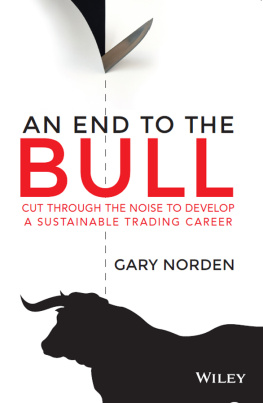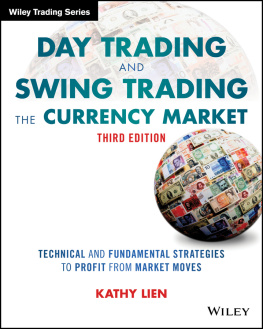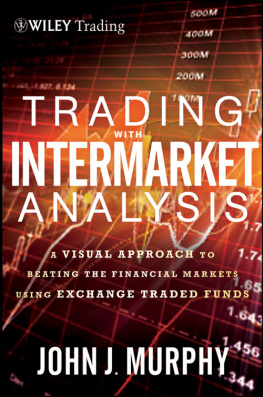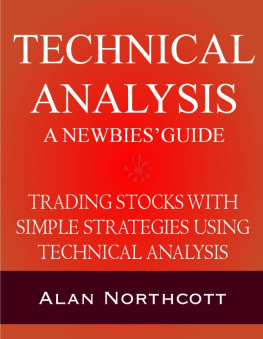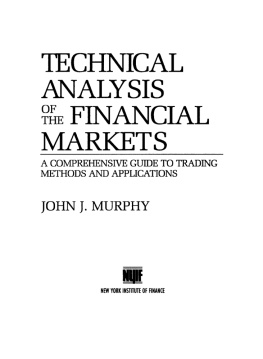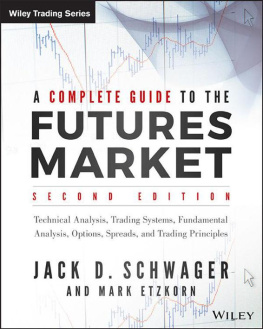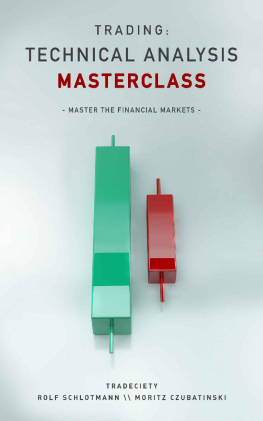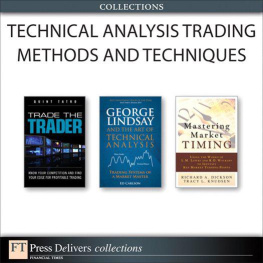
First published in 2015 by John Wiley & Sons Australia, Ltd
42 McDougall St, Milton Qld 4064
Office also in Melbourne
Organic Financial Group 2015
The moral rights of the author have been asserted
| Author: | Norden, Gary, author. |
| Title: | An End to the Bull: cut through the noise to develop a sustainable trading career/Gary Norden. |
| ISBN: | 9780730311447 (hbk.) |
| 9780730311478 (ebook) |
| Notes: | Includes index. |
| Subjects: | Brokers Australia. |
| Stocks. |
| Dewey Number: | 332.62 |
All rights reserved. Except as permitted under the Australian Copyright Act 1968 (for example, a fair dealing for the purposes of study, research, criticism or review), no part of this book may be reproduced, stored in a retrieval system, communicated or transmitted in any form or by any means without prior written permission. All inquiries should be made to the publisher at the address above.
Cover design by Wiley
Cover image (top): iStockphoto.com/kvkirillov
Cover image (bottom): iStockphoto.com/omergenc
Disclaimer
The material in this publication is of the nature of general comment only, and neither purports nor intends to be advice. Readers should not act on the basis of any matter in this publication without considering (and if appropriate, taking) professional advice with due regard to their own particular circumstances. The author and publisher expressly disclaim all and any liability to any person, whether a purchaser of this publication or not, in respect of anything and of the consequences of anything done or omitted to be done by any such person in reliance, whether whole or partial, upon the whole or any part of the contents of this publication.
ABOUT THE AUTHOR
Gary Norden started his trading career at the age of just 18, trading equity derivatives for a Japanese investment house. He was the youngest ever trader in that firms history.
Gary went on to enjoy a successful career as a trader in the City of London. At the age of 23 he became head of LIFFE options for NatWest Markets and he later held senior trading positions at Credit Lyonnais Rouse and ING Financial Markets.
Gary has also spent many years trading futures and options with his own capital, both in the trading pits of LIFFE and on computerised markets.
Since moving to Australia in 2003 Gary has developed an international reputation as a financial markets consultant, trading mentor and author.
Garys first book, Technical Analysis and the Active Trader, was published in 2005 and exposes technical analysis as little more than poorly performing rules of thumb. The book was also translated into Chinese and Korean.
Gary has written for publications and websites around the world, including Your Trading Edge, Stocks and Commodities, www.trade2win.com and www.bullbearings.co.uk.
Gary has a reputation for challenging assumptions and thinking outside the box. He is driven by a love of trading and a desire to help new traders gain access to a more professional standard of information and education. Gary pulls no punches in his attacks on the parts of the financial industry that he believes lead traders down the wrong path.
2014 marks 25 years since Gary started his trading career.
For more information on Gary, visit www.organicfinancialgroup.com.
ACKNOWLEDGEMENTS
To Wendy, Isaac and Anna.
It took a number of years of thinking over different formats and ideas before this version and title jumped out at me. From that moment until publication was literally just a matter of months, and credit for that must go to the team at John Wiley & Sons in Australia. Sarah Crisp was the acting acquisitions editor who helped me frame the project and was so supportive and helpful in the early stages. Following the completion of the manuscript Lucy Raymond and her team ensured that the editing, permissions and publication processes went as smoothly as possible. My sincere thanks to Alice Berry, Keira de Hoog and Allison Hiew who took me through those processes.
I would like to thank Phil Tana, Steve Hossen, Joshua Green and Grant Carter for reading through all or parts of the manuscript and providing their comments and opinions.
Finally I would like to thank my wife, Wendy, both for her support and encouragement and for reading through and editing the manuscript as it was being written.
INTRODUCTION
Stocks are going up.
At first reading I would suspect that most readers would not have an issue with that statement. Its quite common for us to hear such claims, and most of us would have made similar statements during our trading lives.
But what does it really mean? Does it mean that all stocks will go up? Surely not, as even during bull markets some stocks will fall. The reality of markets is that some stocks rise and some fall each and every day. Reducing this action to a simple generalisation is lazy, and poor analysis. What if the overall stock market does go up but other assets or inflation rise further? In that instance those who bought stocks may actually have lost out.
There is an incredible amount of bull$**t in this business. (I will call it noise from now on.) Despite huge progress in the understanding of trader psychology and decision making, noise is still prominent in the trading and investing industry. There are a number of reasons for this (as I explain in chapter 1) but most relate back to the domination of the media by brokers and analysts, instead of traders. Currently most retail traders are, unsurprisingly, confused by all the noise and they too often end up following unreliable analysis.
In my first book, Technical Analysis and the Active Trader, I exposed the flaws of technical analysis, one of the most widely used forms of analysis in the business. I showed that chart patterns, moving averages and other technical tools are unreliable and result in losses for the majority of traders who use them. In this book I will expose a number of other trading myths, some of which have become accepted wisdom. Unfortunately our business is infested with myths, and trying to overturn them is no easy feat.
To me, the statement Stocks are going up is akin to saying Cars are fast. Some cars are and some are not and it can also depend on what we are comparing them to. Compared to horses, cars are fast but compared to aeroplanes, they arent.
Would you buy a car from, or value the advice of, someone who makes statements such as Cars are fast? Yet in this business, each and every day, traders are listening to and acting upon claims from such people. Here is my first piece of advice: ignore experts who make generalisations such as stocks are going up or stocks are cheap and stock XYZ is going to $10 they are unlikely to be traders; they will be sell-side individuals. Traders tend to speak differently, weighing up various risks, and the world seems a lot greyer to them (as opposed to black and white).
However, as I explain in chapter 1, most people prefer to hear simple, clear statements, whether they are valid or not. Ask a decent trader what direction stocks are heading and the answer will include an analysis of risk, a separation of different sectors or classes of shares and a discussion of various outcomes. That is why traders make lousy brokers most retail traders and investors would think that such a response shows weakness because they have been led to believe that real experts can make clear, simple forecasts. This is wrong, and is one of the many beliefs that many readers will need to unlearn.
Next page
